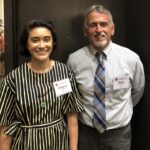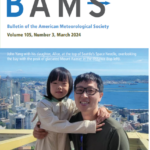Steve Halperin knows what it’s like to have a big job in front of him. The former Dean of the College of Computer, Mathematical and Natural Sciences stepped down from his position earlier this year to return to his position as professor of mathematics and take over another leadership position as Director of CIRUN (Climate Information: Responding to User Needs).
The dean of CMNS is ultimately in charge of thousands of people. That department in particular consists of nearly 1,000 faculty and researchers, thousands of undergraduate and graduate students and millions of dollars in expenses and funding to be juggled. Halperin said that it’s up to the dean to keep all of these different aspects running smoothly.
On August 15, Halperin left his position as dean, but stayed in the department as a professor of mathematics. Though Halperin isn’t teaching any classes this semester, he plans to continue in the future and still works on papers and lectures. It’s plenty to keep him busy while also taking over the CIRUN project.
His new position as director differs from his responsibility as dean because of its lack of administrative duties. This is quite a shift for Halperin, who has been an academic administrator for 21 years, both at the University of Maryland and in Toronto.
While CIRUN is really just getting started, Halperin has been a driving force behind its creation and purpose.
“CIRUN goes back about four and a half years ago,” said Halperin. “And it grew out of a conversation between Tony [Busalacchi] and me when I was dean.”
The whole idea of building a system that would model climate or deliver climate information was really a partnership between Halperin and Busalacchi, one that they have developed and adapted in the past few years.
They put together a conference in the fall of 2007, however, at the time, the country wasn’t ready for technology and ideas that CIRUN would be pushing.
For the first four years of CIRUN, Halperin was busy with his responsibilities as a dean, and Busalacchi was busy running ESSIC (Earth System Science Interdisciplinary Center).
Originally, they had looked for a different candidate to be the director of CIRUN, and it wasn’t until last winter that Busalacchi suggested that Halperin take on the position himself.
Since CIRUN is still getting underway, it’s still a relatively small organization. Halperin operates out of a small office but noted that there are other scientists involved as well.
Currently, CIRUN is setting up workshops, provides support for interdisciplinary projects, has a website, is setting up a database and plans to develop other projects.
One of the most important factors to consider is how much focused information you can provide to people because people are much more interested in things going on in their area rather than in the country as a whole.
CIRUN is now trying to get a better sense of what certain models will be able to predict.
“This is not like the weather service,” said Halperin. “The weather guys actually run their models and predict what it will be like this coming week. With climate and the environment, it’s trickier.”
Collaboration is often necessary for the type of work that CIRUN hopes to do.
“You need to put together teams which involve climate scientists or environmental scientists and then some kind of specialists with the people who will use the information because they will tell you what you need to know,” said Halperin.
The vision of CIRUN was always to build these relationships. It would be like an information supply chain running from people who make decisions back through the scientists. An important part of these relationships would be finding someone who needs information and putting together a team to produce it.
Ultimately, there will be private companies involved with CIRUN as well. It’s important to do things right away, said Halperin, who believes that it is key to jump-start the program now because waiting five to ten years could have serious consequences.
Since there is no model for CIRUN to follow, that makes things even trickier.
When Halperin and Busalacchi created CIRUN, they recognized outside interest in the organization after many people in local and state governments came to them for information.
CIRUN is currently planning some workshops, but these workshops are going to be closed for the time being due to the defined objectives that they’re trying to accomplish. CIRUN will invite specific people to each workshop in an attempt to meet particular goals.
With all of ESSIC’s connections, Halperin believes that a lot of organizations are already aware of CIRUN. Still, it’s important to take it slow for CIRUN to make sure that they’re accomplishing everything that needs to be done in the beginning stages in order to be a success later on.
(Related: See ESSIC News Highlight on the appointment.)






